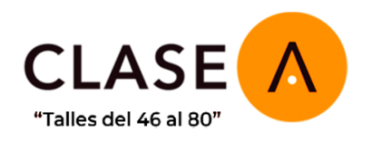Natural language processing to extract social risk factors influencing health ScienceDaily
In the US, clinics boast almost 100 percent EHR adoption numbers along with strict interoperability policies in place. And since natural language processing is one of the fastest-growing AI fields in medicine, we wanted to talk about available applications, emerging trends, and ways to prepare for NLP adoption. NLP techniques can simplify and automate processes that sort, organize, and interpret complex medical data. NLP applications might identify patients with certain conditions and alert clinicians to take action. It could help with chronic disease management, preventative care, and population health surveillance.

We help enterprises large and small with data insights and storytelling by leveraging Machine Learning, Artificial Intelligence, Automated Analysis, and Visual Intelligence using modern charts and narratives. Either NLP can extract the patient participation criteria and find a suitable subject from the database, or NLP can generate a list of questions for users interested in participating. For example, IBM reports that with their clinical trial matching solution, they were observing an 80% hike in enrollment. This NLP use case is also about making the most out of vast information to derive concrete insights.
NLP in Healthcare: Applications and Benefits
Both training and inference processes run directly within Databricks; beyond the benefits of speed and scale, this also means that data is never sent to a third party, a critical privacy and compliance requirement when processing sensitive medical data. Best of all, Databricks is built on Apache SparkTM, making it the best place to run Spark applications like Spark NLP for Healthcare. “Doctor’s notes are a rich space to create structured information from their natural workflow,” says Michael Draugelis, vice president for predictive health at Hackensack Meridian Health. “We are designing new AI-powered solutions to connect clinical teams, patients, and the community automatically from these insights—without creating cumbersome screen clicks and prompts. Unbiased training data is an essential requirement if the conclusions reached by NLP algorithms are to be trusted. Clinicians will need training to understand how NLP can be safely used as part of routine practice.

Additionally, NLP can help identify gaps in care and provide targeted interventions to improve patient outcomes. Anyway, sentiment analysis can also be leveraged in a similar way in the healthcare industry to gather feedback from patients on the quality of medical services, perceived flaws, and potential improvements. This is typically done by looking for keywords with positive or negative overtones and weighing their relevance to the topic under consideration.
Precision Medicine: How Healthcare Providers Can Prepare for the Future of Medicine
NLP algorithms can extract pertinent data from various sources, allowing healthcare practitioners to keep current with recent medical developments. Electronic health records (EHRs), test results, and other patient-specific data can be analyzed using CDSS powered by NLP to produce individualized diagnosis, treatment, and follow-up care recommendations. To identify early warning indications of disease epidemics and public health situations, natural language processing services scan a large quantity of data from several sources, including social media, news articles, and online forums. NLP-powered surveillance systems can give public health managers invaluable information for prompt intervention and response planning by tracking trends, symptoms, and geographic patterns. In addition, ML and natural language processing (NLP) help healthcare organizations understand the meaning of clinical data, he adds.
- Clinical Named Entity Recognition Posology — shown in the image below — is a more specified version of the Clinical NER General Model.
- The data is typically kept in unstructured formats, making extracting insightful information and spotting trends difficult.
- With the help of speech recognition software, human scribes could be completely removed from clinical documentation.
- It contains key administrative data such as the patient’s demographic and what medication they are on, as well and notes on their medical history; information that is vital at the point of care.
- As you can see based on this example, this application of NLP in healthcare enables physicians to optimize patient care by identifying which problems are most pressing and administering immediate treatment.
How was it possible to achieve such promising results in terms of performance, market revenues, and impact on the modern society? The first significant breakthrough in NLP’s evolution was the shift from the old-fashioned rule-based methods (which followed pre-defined sets of rules) to machine learning models relying on statistical inference to autonomously learn human-language rules. Fortunately, NLP has made great strides in terms of human/machine interaction, specifically in turning the unstructured data typical of our daily communication into structured information usable by computers. Today this fascinating technology at the intersection of computer science, AI, and linguistics has evolved enough to solve these issues brilliantly. Use cases of NLP in Healthcare include the US-based AARP’s (American Association of Retired Persons) project for designing a new diet program. The program was aimed towards people over the age of 50 for improved geriatric healthcare.
Clinical Research and Data Mining
Cogent Infotech helps organizations make better decisions, identify and maximize opportunities, maximize efficiency and cost savings, and create sustainable competitive advantages. To read more articles about NLP and related emerging technologies, please visit the Cogent website. We offer hospital management software development and integration services to help you ensure efficient clinic management. Data cleaning techniques are essential to getting accurate results when you analyze data for various purposes, such as customer experience insights, brand monitoring, market research, or measuring employee satisfaction. Our client, a global pharmaceutical leader, required peering over 7 Mn documents to capture the many parameters specific to the trials it was conducting. But, no matter how proficient the person doing it, the process is time-consuming, expensive, and error-prone if you factor in the human fatigue that is a natural consequence of such a task.
Then, NLP can caption that image with standard format and details such as problems, findings, indication, and severity. This application of NLP can be a crucial player during research or query resolution where a user is searching for a particular fact or answer. Certainty assessments, returned in the certaintyAssessment field, describe
the original note taker’s confidence. For example, if the original note
contains “The patient has a sore throat”, the certainty assessment
returns a LIKELY value to indicate the note taker’s confidence that it
was likely that the patient had a sore throat. If the original note contains “The patient does
not have a sore throat”, the certainty assessment returns an UNLIKELY
value to indicate the note taker’s confidence that it was unlikely
that the patient had a sore throat.
What is NLP & How Does It Work?
NLP in healthcare can accurately give voice to the unstructured data of the healthcare universe, giving incredible insight into understanding quality, improving methods, and better results for patients. These are just a few of the many possible applications for natural language processing (NLP) in the healthcare industry. Because of this, a growing number of healthcare providers and practitioners are adopting NLP in order to make sense of the massive quantities of unstructured data contained in electronic health records (EHR) and to offer patients more comprehensive care.
An excellent illustrative example — and, perhaps, its most common use case — is when businesses apply sentiment analysis to social media. In doing so, they’re able to better understand how the public perceives their products, services, or brand as a whole. A healthcare provider could theoretically do the same by analyzing patients’ comments about their facility on social media in order to get an accurate picture of the patient experience. The use of rules-based triggers can identify appropriate patient cohorts and automatically match between the description of a clinical trial and the information contained in an EHR. The convergence of the Cloud Segment and IVR Segment within the realm of NLP is reshaping the https://www.globalcloudteam.com/ and life sciences market.
Top 8 Data Analysis Companies
Subjects, returned in the subject field, describe the individual the entity
mention relates to. Temporal relationships, returned in the temporalAssessment field, describe
how this entity mention relates to the subject temporally. The Healthcare Natural Language API can infer functional features, or attributes,
of an entity mention from context. For example, in the statement
“Kusuma’s mother has diabetes”, the condition “diabetes” has the functional
feature of subject FAMILY_MEMBER. Apart from the listed fields, the response might also contain the additionalInfo
field, which states any additional description about the entity mention type.

Healthcare businesses can improve patient care, streamline operations, and improve decision-making processes by utilizing the capabilities of NLP to extract insightful information from massive quantities of unstructured data. NLP leverages artificial intelligence (AI) to help analytics systems understand and work with unstructured data. The capability promises to extract useful data from EHRs and even give EHRs speech-recognition capabilities during clinician visits. EHRs, however, are currently frustrating clinicians, as they take time away from patient engagement and improving patient care.
Trending blogs
NLP accelerates drug discovery by swiftly processing and extracting insights from an immense volume of scientific literature, clinical trial data, and research articles. Researchers can identify potential drug candidates, understand their mechanisms of action, and assess safety profiles more efficiently. This expedites the entire drug development lifecycle, reducing costs and bringing new therapies to market faster. The adoption Natural Language Processing Examples in Action of natural language processing in healthcare is rising because of its recognized potential by health systems to search, analyze and interpret mammoth amounts of patient datasets. Using advanced medical algorithms and machine learning in healthcare, NLP technology has the potential to harness relevant insights and concepts from clinical notes that was previously considered by the healthcare industry as buried in text data form.

There are no comments